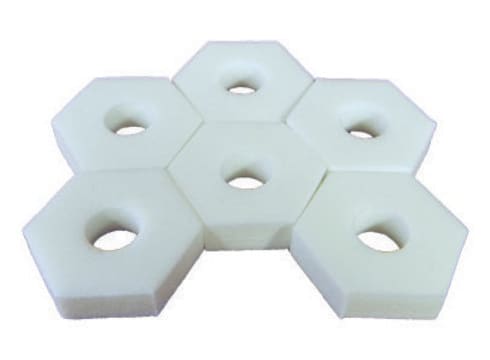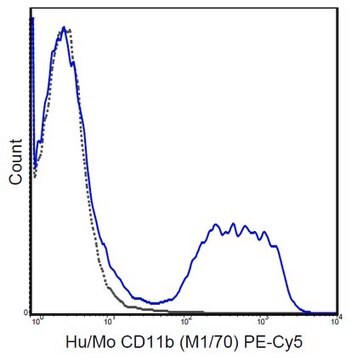EPI010
Sirtuin 2 (SIRT2) Inhibitor Screening Assay Kit
100 assays in 96 well plates
Se connecterpour consulter vos tarifs contractuels et ceux de votre entreprise/organisme
About This Item
Code UNSPSC :
12352200
Nomenclature NACRES :
NA.41
Produits recommandés
Utilisation
100 assays in 96 well plates
Conditions de stockage
protect from light
Numéro d'accès NCBI
Conditions d'expédition
wet ice
Température de stockage
−20°C
Informations sur le gène
human ... SIRT2(22933)
mouse ... SIRT2(64383)
Description générale
Sirtuin 2 (SIRT2) is a cytoplasmic protein and is part of the sirtuin family of proteins. Sirtuin family contains a sirtuin core domain and isgrouped into four classes with SIRT2 being a member of class I. SIRT2 colocalizes with microtubules. The gene encoding this protein is localized on human chromosome 19q13.2.
With Sigma′s Sirtuin Inhibitor Screening Kit, Sirtuin deacetylates the Substrate, and then a Developer cleaves the deacetylated substrate to release a fluorescent group, the latter of which can be detected at Ex/Em = 395/541 nm. In the presence of a SIRT inhibitor, the deacetylation will be impeded, preventing substrate cleavage and release of the fluorescent group. The kit provides a rapid, simple, sensitive, and reliable test, which is suitable for both low and high-throughput screening of SIRT2 inhibitors. A positive control inhibitor, Nicotinamide, is included to compare with the efficacy of the test inhibitors.
With Sigma′s Sirtuin Inhibitor Screening Kit, Sirtuin deacetylates the Substrate, and then a Developer cleaves the deacetylated substrate to release a fluorescent group, the latter of which can be detected at Ex/Em = 395/541 nm. In the presence of a SIRT inhibitor, the deacetylation will be impeded, preventing substrate cleavage and release of the fluorescent group. The kit provides a rapid, simple, sensitive, and reliable test, which is suitable for both low and high-throughput screening of SIRT2 inhibitors. A positive control inhibitor, Nicotinamide, is included to compare with the efficacy of the test inhibitors.
Application
Sirtuin 2 (SIRT2) inhibitor screening assay kit has been used for acetyl peptide deacetylase assay.
Actions biochimiques/physiologiques
Sirtuin 2 (SIRT2) maintains the integrity of the genome. Inhibition of SIRT2 can lead to neuroprotection in cellular and invertebrate models of Huntington′s disease. Huntington′s disease is characterized by increased sterol synthesis in neuronal cells and this process is reversed by SIRT2 inhibition. SIRT2 can deacetylate lys40 of α-tubulin both in vitro and in vivo. Knockdown of SIRT2 by small interfering RNA (siRNA) leads to tubulin hyperacetylation.
Caractéristiques et avantages
- Simple, sensitive, and reliable assay
- Species reactivity: mammalian
- Utilizes fluorometric methods
- Suitable for individual tests or high throughput assays
- Convenient 96-well microplate format
- Screening and characterization of Sirtuin inhibitors
Produit(s) apparenté(s)
Mention d'avertissement
Warning
Mentions de danger
Conseils de prudence
Classification des risques
Eye Irrit. 2 - STOT SE 3
Organes cibles
Respiratory system
Code de la classe de stockage
10 - Combustible liquids
Certificats d'analyse (COA)
Recherchez un Certificats d'analyse (COA) en saisissant le numéro de lot du produit. Les numéros de lot figurent sur l'étiquette du produit après les mots "Lot" ou "Batch".
Déjà en possession de ce produit ?
Retrouvez la documentation relative aux produits que vous avez récemment achetés dans la Bibliothèque de documents.
Proteomics-based identification of differentially expressed genes in human gliomas: down-regulation of SIRT2 gene
Masaharu Hiratsuka
Biochemical and Biophysical Research Communications (2003)
The human Sir2 ortholog, SIRT2, is an NAD+-dependent tubulin deacetylase.
North BJ
Molecular and Cellular Biochemistry, 11(2) (2003)
Propofol Inhibits SIRT2 Deacetylase through a Conformation-specific, Allosteric Site*
Brian P
The Journal of Biological Chemistry (2015)
SIRT2 inhibition achieves neuroprotection by decreasing sterol biosynthesis
Ruth Luthi-Carter
Proceedings of the National Academy of Sciences of the USA (2010)
Damir Janigro
The Cell Cycle in the Central Nervous System (2008)
Notre équipe de scientifiques dispose d'une expérience dans tous les secteurs de la recherche, notamment en sciences de la vie, science des matériaux, synthèse chimique, chromatographie, analyse et dans de nombreux autres domaines..
Contacter notre Service technique









